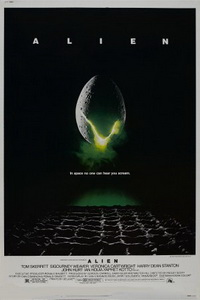
Cast
Tom Skerritt as Dallas
Sigourney Weaver as Ripley
Veronica Cartwright as Lambert
Harry Dean Stanton as Brett
John Hurt as Kane
Ian Holm as Ash
Yaphet Kotto as Parker
Bolaji Badejo as The Alien
Storyline
The first film is the start of a long story of a woman called Ripley, played by Sigourney Weaver, who fights with the ultimate killing machine in existence. The alien phenomenon terrified audiences around the world with a film combined with science fiction and horror. Set in the future, a spaceship – the Nostromo contains seven crew in hibernation and is on its way back to Earth. That is until the ship is interrupted by an extraterrestrial signal that comes from a distant planet. Because of company regulations, the computer wakes the crew and they go investigate the signal out on the planet. They land on the planet and three of the crew walk to where the signal is originating from – a derelict alien spacecraft.
After a bit of exploring, they uncover a fossilized creature which has a hole through its chest as if something was trying to break free. After the curiosity gets the better of him, one of the crew finds an alien egg and gets a little too close to it. A small creature leaps out of the egg and latches itself to the head of the crew member and this is where the story begins. They bring the creature back to the ship and after a while it falls off the face of the crew member. Unknown to him, the creature has impregnated him with an alien. A little later, the creature explodes from his chest and escaped and hides on the ship. The small creature eventually evolves into a creature with devastating abilities and power. From this moment on, the crew must find a way to kill it before it kills them…
Origins
The idea for Alien came about when writer Dan O’Bannon was studying cinema at university and he made a science fiction film with director John Carpenter and concept artist Ron Cobb called Dark Star. The whole experience left O’Bannon wanting to do a story more focused on horror with an alien that actually looked real. Ronald Shusett was writing an early version of Total Recall and he was so impressed with Dark Star, that he contacted Dan O’Bannon to work together on their films. They chose to work on O’Bannon’s project first as they thought it would be a lot cheaper to make. By that point, O’Bannon had a script called Memory that was 29 pages long and was essentially the opening scene of Alien. A crew awoke from hypersleep by a mysterious signal coming from a planet which they go to and investigate. That was as far as he got and wasn’t sure what the alien was going to be or even look like. Dan O’Bannon then worked on a film adaptation of Dune where he went to Paris and spent six months there working on it. He met several artists there including Chris Foss, H.R. Giger and Jean “Moebius” Giraud.
The Dune adaptation collapsed but it gave O’Bannon new ideas. He found Giger’s art disturbing but captivating at the same time so he wrote a script with a creature based on his work. O’Bannon returned to Los Angeles to live with Ronald Shusett and they both returned to work on O’Bannon’s Memory script. Shusett suggested using one of his film ideas about gremlins invading a B-17 bomber during World War 2 and the other half of the script would take place on a spaceship. The working title for the script was going to be Star Beast but O’Bannon didn’t like it and changed it to Alien.
Shusett thought that perhaps one of the crew could be implanted with an alien embryo that would ‘burst’ out of him which he thought would be a good explanation as to how the alien boards the ship. O’Bannon was inspired by many films when he wrote the script including 1951’s The Thing from Another World, 1956’s Forbidden Planet and 1965’s Planet of the Vampires. Some stories were inspiration too including a 1953 short story called Junkyard by Clifford D. Simak and 1960’s Strange Relations by Philip José Farmer. Plenty of scenes in Alien are extremely similar to those seen in those films and stories.
Shusett and O’Bannon had 85% of the script completed and submitted it to several movie studios. They almost got a deal with Roger Corman’s studio when a friend got them a better deal and give their script to Walter Hill, David Giler and Gordon Carroll who had a production company called Brandywine. O’Bannon and Shusett signed a deal with Brandywine but Hill and Giler weren’t entirely happy with the script and made lots of rewrites to it much to Shusett and O’Bannon’s dismay. They believed Hill and Giler had little experience with science fiction and O’Bannon believed they were trying to remove his name from his script and claim it as their own work.
Giler and Hill added the Ash android subplot which O’Bannon didn’t like but Shusett later said it was one of the best things in the movie. Walter Hill and David Giler went through eight different drafts of the script, adding more work to the Ash subplot and making the dialogue flow better. Some scenes were cut such as the ones exploring the planet. The studio 20th Century Fox still wasn’t happy financing a science fiction film but after the success of 1977’s Star Wars, science fiction became the hot new genre and 20th Century Fox wanted a science fiction script. The only script they had was the one for Alien so it was greenlit with a budget of $4.2 million.
Pre-Production
Dan O’Bannon assumed he would direct Alien but the studio asked Walter Hill to direct it instead. Hill had other film projects and wasn’t happy doing the visual effects required so a search was underway for a director. A few directors were considered including Peter Yates, Jack Clayton and Robert Aldrich but the producers thought they wouldn’t take the film seriously. The producers at Brandywine were impressed with 1977’s The Duellists by Ridley Scott and asked him to direct Alien which he promptly accepted. Scott worked in London creating various storyboards including spaceship and spacesuit designs and impressed with his work, 20th Century Fox doubled the movie’s budget to $8.4 million.
Dan O’Bannon showed Ridley Scott H.R. Giger’s artwork and they felt that his painting, Necronom IV, was perfect for the film’s alien creature so they asked the studio to hire him. The studio wasn’t keen on his artwork, saying it was too horrific for audiences but the producers at Brandywine pushed for him to be hired. Ridley Scott went to Zurich to meet H.R. Giger and hired him to work on everything related to the alien creature and the environment including the planet’s surface, the derelict spacecraft and each stage of the alien ‘life cycle’ from an alien egg to an adult alien.
Dan O’Bannon then hired artists Ron Cobb and Chris Foss to design the spaceship and the spacesuits. Cobb created a huge number of drawings of the spaceship and went through many names including Leviathan and Snark. Eventually, it was named after Joseph Conrad’s 1904 novel Nostromo and the escape shuttle was called the Narcissus, named after Conrad’s 1897 novella The Nigger of the Narcissus. Ridley Scott evolved the spaceship design into a tugging vessel towing a refining platform 2 miles long and 1.5 miles wide. Jean “Moebius” Giraud worked on Alien for a few days and designed some of the costumes for the spacesuits.
Casting
Casting auditions for the film were held in London and New York. Ridley Scott wanted to hire strong actors so he could focus on the visual style of the movie. Casting director Mary Selway was hired to handle the casting in the UK and Mary Goldberg handled it in the US. Shusett and O’Bannon never really developed the characters until a later draft and each of the characters could be male or female. Bolaji Badejo was a Nigerian design student and was found in a bar by the casting team. Ridley Scott thought he was tall and thin enough to play the alien and his arms and legs were elongated to give the appearance that it is an actual creature and not a man in a suit. Veronica Cartwright originally read for the role of Ripley and she wasn’t told she got the part of Lambert until she came to London for wardrobe. Ian Holm was cast as Ash the android and he was the most experienced actor in the cast having appeared in 20 films.
John Hurt was Ridley Scott’s first choice for the role of Kane but he was already contracted to work on a film in South Africa at the time. Joe Finch was cast as Kane but he became ill on the first day of filming and was diagnosed with diabetes. John Hurt was in London at the time and his project in South Africa had collapsed so he was cast to play Kane. Yaphet Kotto, who is African American, was chosen to play Parker in order to add a bit of variation to the cast.
Tom Skerritt had been approached for a part very early in development but he declined as it didn’t have a director and was low budget. When Ridley Scott came aboard, and the film’s budget was doubled, he was cast as Dallas. Harry Dean Stanton was cast as Brett. Stanton wasn’t that enthusiastic about science fiction or monster movies but Ridley Scott convinced him that Alien was a thriller. The last person to be cast was Sigourney Weaver who had Broadway experience but was unknown in the film business. Producers Walter Hill and David Giler wanted a woman to be the lead character and were really impressed with her audition so they cast her as Ripley.
Production
Filming for Alien took place in Shepperton Studios near London from July 5, 1978 to October 21, 1978 and the model and miniature filming took place at Bray Studios in Water Oakley in Berkshire. The crew didn’t have a lot of time on production due to the studio wanting the film to finish on schedule. Over 200 people created the three main sets: the planet’s surface, the derelict spacecraft interior and the Nostromo interior. Miniatures of the planet’s surface were created by art director Les Dilley using Giger’s designs as a guide. The spacesuits were thick, heavy and lined with nylon and were difficult to breathe in. This, combined with the high temperatures, caused the actors to pass out and nurses had to be on set to supply oxygen tanks.
A 58-foot landing leg was constructed for the exterior shots of the Nostromo but Ridley Scott didn’t think it looked large enough. He used his two sons and another child to stand in for the actors in smaller spacesuits to give the appearance the sets were much bigger than they really were. He used the children again when the group encountered the ‘Space Jockey‘ in the derelict spacecraft. Again, due to the extreme heat and lack of oxygen, the children nearly collapsed so oxygen systems were added to the costumes.
The interior of the Nostromo spaceship had deliberately been given an industrial look to it to give the idea that it had been created using old technology. Artist Ron Cobb created the symbols and signs found in the Nostromo including the Weylan-Yutani logo. Even though the name is never said in the film, you can see it on various props. He created the name as to give an impression of a business partnership between a British company and a Japanese company. Cobb got the idea of Weylan from the name “British Leyland Motor Corporation” and Yutani was the name of his Japanese neighbour.
In Aliens, the company was renamed to Weyland-Yutani. Parts of the Nostromo’s corridors were created using parts of a bomber aircraft and mirrors were used to give the impression that the corridors were much longer than they were. Special effects supervisors Brian Johnson and Nick Allder were responsible for making most of the props come to life such as the motion tracker and the flamethrower. Jones the cat was actually portrayed by four different cats and Sigourney Weaver became allergic to the cat hair and the glycerin on the actors’ skin. The filmmakers removed the glycerin so she could continue working with them.
H.R. Giger designed the creatures and sets so that they would be organic and biomechanical in nature. He used dried bones with plaster to sculpt the interior of the derelict spacecraft and its egg chamber. Originally, 20th Century Fox wanted to cut out the ‘space jockey’ scene as they felt it cost a lot of money for just one scene but Ridley Scott convinced the studio that it was important to the movie to impress the audience. Only one wall of the set was constructed and the ‘space jockey’ sat on top of a disc that would rotate in order to get different camera angles. Giger also airbrushed the entire ‘space jockey’ by hand.
In an early version of the script, the alien eggs were going to be originally located in an underground pyramid and Chris Foss, Ron Cobb and H.R. Giger created concept art for this but it was abandoned because it was too expensive. The egg chamber was moved into the derelict spacecraft and the ‘space jockey’ set was redressed for that sequence. The blue light effects covering the eggs were made by lasers which the crew borrowed from the band The Who who were using them in the stage next door. In the script, Alien was originally going to end when the Nostromo exploded and Ripley escaped in the shuttle. Ridley Scott asked 20th Century Fox to give him more money to film a new scene where Ripley confronts the alien on the Narcissus. Originally, Scott wanted the alien to bite off Ripley’s head and make her final log entry using her voice but the producers refused, saying that the alien had to die.
Models and miniatures were used for the spaceships and planet surface. The model makers used Ridley Scott’s storyboards and Ron Cobb’s concept art to create the Nostromo model. Three models of the Nostromo were created, a 12-inch version for medium and long shots, a 4-foot version for rear shots and a 12-foot version for the undocking and scenes on the planet’s surface. Ridley Scott made countless changes to the models, causing problems between him and the modelling and filming teams. The Nostromo was originally yellow and filming of the models took place for six weeks before Ridley Scott ordered it be changed to grey and they had to all start from scratch. He requested more pieces to be added to it and took a hammer to sections of it himself and removed many of the spires that modelmaker Martin Bower had spent weeks working on. He also had problems with the miniature effects cinematographer, Dennis Ayling, when it came to lighting the models.
Another 40-foot model was created for the underside of the Nostromo from which the Narcissus would detach. Kane’s body would also be ejected at this section. A 30-foot docking arm was also constructed for the scene where the Nostromo detaches from the refinery. There was only one shot filmed using blue screen which is when the Narcissus escapes the Nostromo blast. Everything else was filmed against black backgrounds. The shots where we see the characters in the windows of the ship, it was filmed using bigger models containing projection screens.
Creatures
When Kane first encounters the alien egg, this was actually shot in post-production. The egg was made out of fibreglass so that the light from his torch could pass right through it to give it a transparent effect. When the creature inside moves, this is actually Ridley Scott moving his hands inside the egg. The contents of the egg were made from a cow’s stomach and tripe. You might notice that the alien egg on the film’s poster and teaser trailer looked quite different to the one in the movie. The early test shots were actually filmed using a hen’s egg. The facehugger creature and its insides were made out of a sheep’s intestine and high-pressure air hoses enabled it to be shot out of the egg at high speed.
The scene was filmed in reverse and during the editing process, it was reversed and slowed down. The facehugger was the first creature that H.R. Giger designed and it went through many different sizes but eventually settled on a small creature with human-like fingers and a long tail. The final version was finalised by Dan O’Bannon and Ron Cobb and Cobb suggested making the creatures have acid for blood which would burn through anything. When Ash inspects the dead facehugger, it was made using fish and shellfish to create its insides.
The chestburster design was inspired by Francis Bacon’s 1944 painting “Three Studies for Figures at the Base of a Crucifixion”. Giger went through many designs, with early designs looking like a plucked chicken. When the creature bursts out of Kane, an artificial torso was used containing fake blood and John Hurt’s head and arms were coming out from under the table. There was also a puppeteer under there who was holding the chestburster on a stick. The cast were told what would happen and they had seen the creature beforehand but they didn’t realise that fake blood was going to burst out everywhere. As a result, Veronica Cartwright’s reaction, in particular, was real and she fell over. After it bursts out of Kane, the chestburster scurries off. This effect was made possible by cutting a slit in the table and a puppeteer moved it along the table.
H.R. Giger went through many concept paintings of the adult alien before coming to the final version. He sculpted the body from plasticine while the head was made by Carlo Rambaldi using Giger’s designs as a guide. Rambaldi made some small changes due to the mechanical parts that move the inner jaw and mouth and the head had over 900 moving parts. A human skull was used in the head which was hidden under the translucent cover. Lots of K-Y Jelly was used to creature the slimy effect and the alien’s constant drooling. The alien is portrayed by 7 foot 2 Bolaji Badejo in most scenes while stuntmen Eddie Powell and Roy Scammell portrayed it in the scene where it comes down from the ceiling and kills Brett. A full body plaster of Badejo was done in order to make a latex costume and he attended t’ai chi and mime classes to prepare for the role.
In the scene where Ash reveals himself to be an android, a puppet was made of the actor’s torso while someone underneath operates it. An animatronic head was made using a face cast of Ian Holm but it didn’t look realistic enough so the actor kneeled under the table with his head emerging from a hole. To create the android’s insides, milk, caviar, pasta and marbles were used to give the effect that he was a robot.
Post-Production
Post-production on Alien lasted around 20 weeks. Terry Rawlings was the film’s editor having already worked with Ridley Scott on The Duellists and they edited the film to have a a slow pace in order to build suspense. The first cut of Alien was over three hours long but was edited down to under 2 hours. A key scene cut from the theatrical cut was when Ripley encounters Brett and Dallas who were cocooned. Ridley Scott said it was cut because it didn’t look realistic enough and it slowed down the pacing of Ripley’s escape from the Nostromo. It was released as a deleted scene on the DVD and part of the scene was reinserted into Ridley Scott’s Director’s Cut.
Originally Ridley Scott wanted the film to be scored by Isao Tomita but 20th Century Fox wanted a more experienced composer so Jerry Goldsmith was chosen. Goldsmith wanted the film’s opening scenes to create a sense of mystery and build up the suspense throughout the film. Ridley Scott didn’t like the score in the opening scene so Goldsmith rewrote it. Editor Terry Rawlings used pieces of his score from Goldsmith’s previous movies and he and Ridley Scott used some of his cues for the temporary score. They then re-edited some cues and re-scored some parts to fit into these cues. The film’s score was highly praised and was nominated for many awards. The Alien score has been released on various albums with different tracks and sequences over the years.
Release & Marketing
Two trailers were shown to people, the first included rapidly changing still images with some of Goldsmith’s score from Logan’s Run and the second was test footage of a hen’s egg. Alien was promoted under the tagline: “In space no one can hear you scream”. The movie was rated R in the US, X in the UK and M in Australia. 20th Century Fox originally wanted an AA certificate in the UK but the BBFC was worried about the sexual imagery in the movie. The film opened in the US on May 25, 1979 but didn’t have a proper premiere event. In the UK, the film premiered at the Edinburgh Film Festival on September 1, 1979 and then at the Odeon Leicester Square in London on September 6, 1979, It opened nationwide on January 13, 1980.
Box Office
The film was a box office success, grossing $80,931,801 in the US and £7,886,000 in the UK. The international gross is not really known so the worldwide gross varies between $104,931,801 and $203,630,630.
Reception
Initial reviews of the film were generally mixed. Some critics said it was a disappointment when compared to Star Wars, Close Encounters of the Third Kind and 2001: Space Odyssey. However, in the years after Alien was released, it developed quite a following and many people consider it a masterpiece. Many critics praise every aspect of it from the visual design to the horror elements, and the eerie score from Jerry Goldsmith. It currently holds a Fresh rating of 97% on RottenTomatoes based on 91 reviews.
Media Releases
Alien has been released on many different formats over the years. It was first released as a 17-minute Super-8 version for people who had a projector at home. It was released on VHS and Betamax for rental which grossed $40,300,000 in the US. Laserdisc and videodisc versions were released including a commentary and deleted scenes. There was a VHS Boxset containing the first three movies and another boxset containing all four movies after Alien Resurrection was released. Alien was first released on DVD in 1999 on its own and part of the Alien Legacy boxset which was also released as a VHS boxset.
In 2003, 20th Century Fox was producing the Alien Quadrilogy boxset and asked Ridley Scott to remaster the film and release a Director’s Cut of Alien. There were 4 minutes of new material but Scott cut out 5 minutes from the theatrical cut. Part of the Dallas and Brett cocoon scene made it into the Director’s Cut. Fox released the Director’s Cut to cinemas for Halloween 2003 and released the Director’s Cut as a 2-disc set and part of the Alien Quadrilogy on December 2, 2003. All the features from the first DVD made it into the set as well as countless new featurettes, new deleted scenes, a brand new commentary and other things. In October 2010, Alien was released on Blu-Ray and as part of the Alien Anthology Blu-Ray boxset. It included all the extras of the previous releases as well as additional featurettes.
Merchandise
A novelization of the movie was released, written by Alan Dean Foster, based on the shooting script. There was a comic adaptation called Alien: The Illustrated Story from Heavy Metal Magazine. Two behind-the-scenes books were released called The Book of Alien containing lots of production photos and the other was called Giger’s Alien which contained H.R. Giger’s artwork from the movie. The soundtrack album was first released in 1980. A 12″ model kit of the alien was released and Kenner made a larger-scale alien and a board game. Many video games were released in the years after its release. First, there was a pac-man style Alien game for the Atari 2600 in 1982 and in 1984, an Alien adventure game was released for Commodore 64, Amstrad CPC, Apple II and ZX Spectrum. Most recently, Alien Isolation will be released in late 2014 for PC, PS3, PS4, X360 and X-Box One, and the game borrows heavily from the film.
Production Stills
You can view more images tagged with Movie - Alien - Stills here.
Concept Art
Downloads
- Alien Script (39KB) – Final script for Alien in text format.
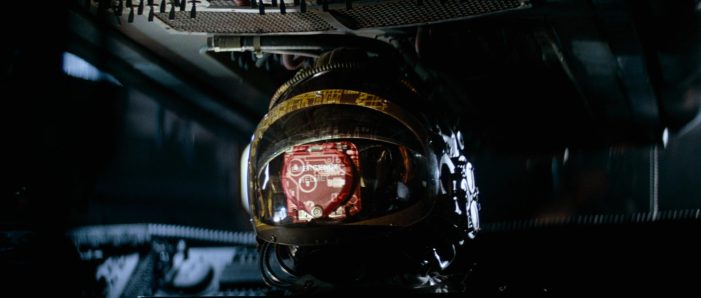
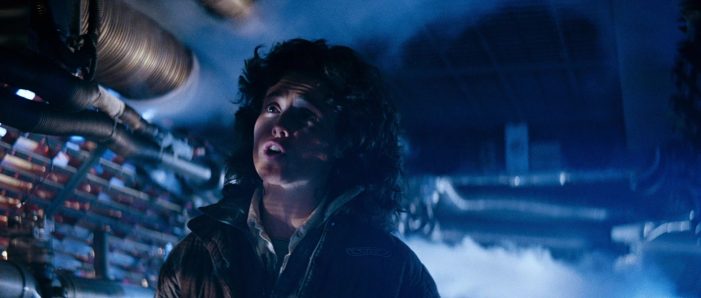
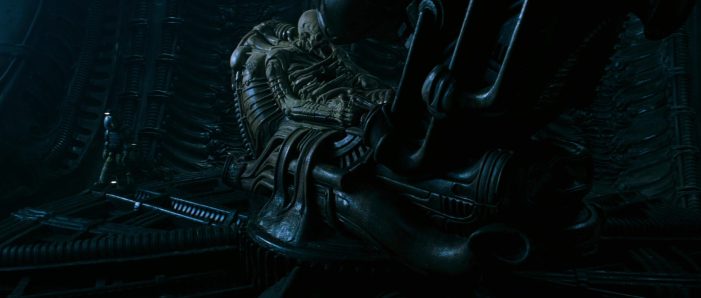
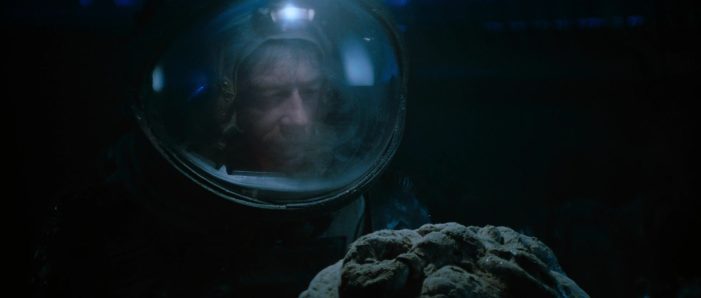


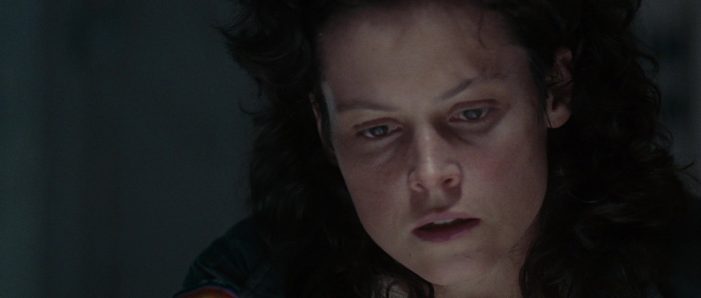
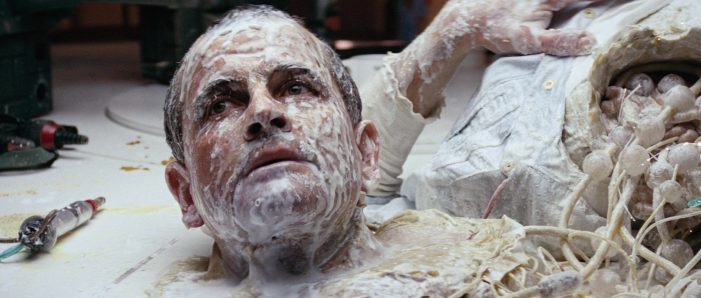
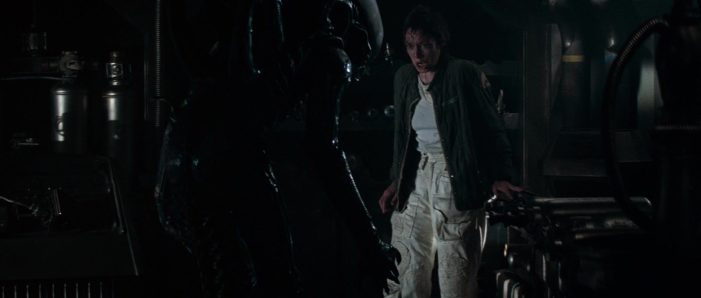
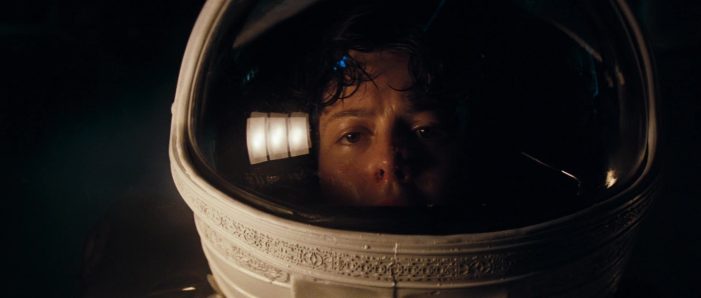
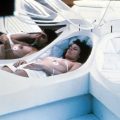
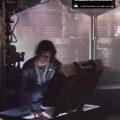
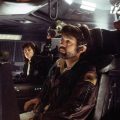
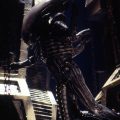
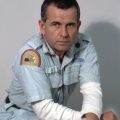
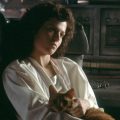

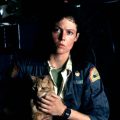
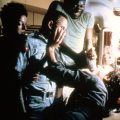
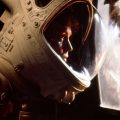
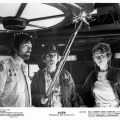
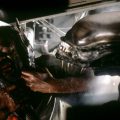
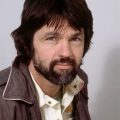
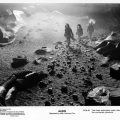
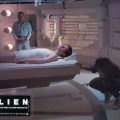
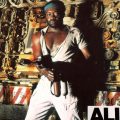
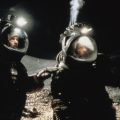
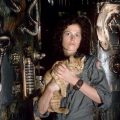
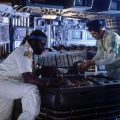
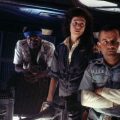
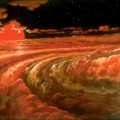
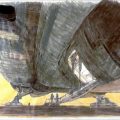
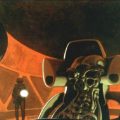
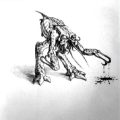
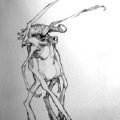
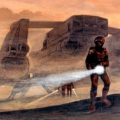
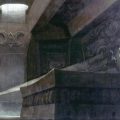
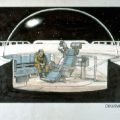
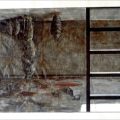
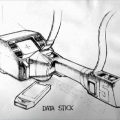


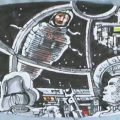

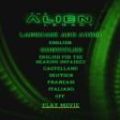


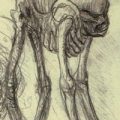

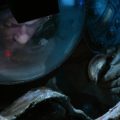
Best film in the franchise. Nobody can change my mind.
i love it.
I Like 1979’s Alien, I Give It Three Stars, The Only Version That I Prefer Of 1979’s Alien Is The Original 1979 Theatrical Version/Original 1979 Theatrical Cut (117 Mins).
I Like 1979’s Alien, I Give It Three Stars, The Version That I Always Do Prefer Of 1979’s Alien Is The Original 1979 Theatrical Version (117 Mins).
This movie is epic and I’m only 13 right now and I saw all of the films except this one when i was 4 so ya my life is here
Classic movie, a little too drawn out, but still a great movie!
great shit.. all the props and everthing are real. the hazy dark picture quality is great and camera shots.good times